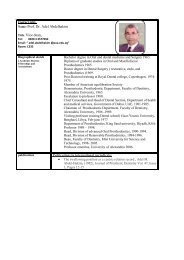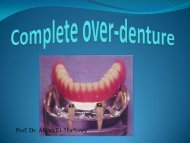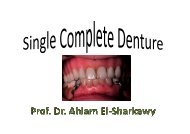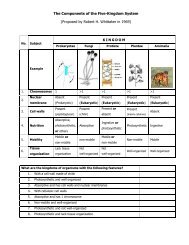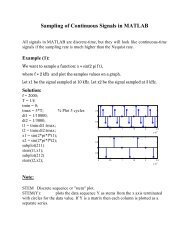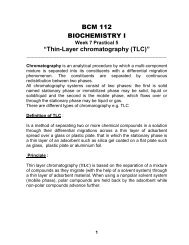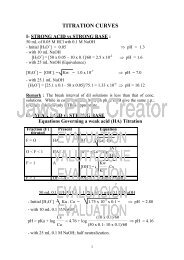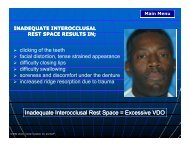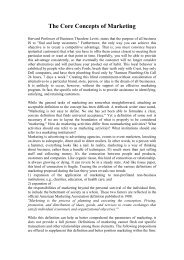Create successful ePaper yourself
Turn your PDF publications into a flip-book with our unique Google optimized e-Paper software.
<strong>Rest</strong><br />
Any unit of a partial denture that rest on a<br />
tooth surface (occlusal, lingual or Incisal ) to<br />
provide vertical support<br />
<strong>Rest</strong> Seat<br />
Portion of a tooth prepared to receive a rest
<strong>Occlusal</strong> rest<br />
Cingulum <strong>Rest</strong>s &<br />
Incisal <strong>Rest</strong>s<br />
<strong>Occlusal</strong> onlays<br />
Embrasure Hooks
Definition<br />
Types<br />
Requirements<br />
Functions<br />
Effect of occlusal<br />
rests on the tooth
<strong>Occlusal</strong> <strong>Rest</strong><br />
A rigid extension of a partial denture that<br />
contacts the occlusal surface of a tooth or<br />
restoration
1. 1.It must fit the tooth accurately with<br />
beveled margin????? To prevent food<br />
stagnation<br />
2. It must be at right angle or less to the<br />
long axis of the tooth?????? To prevent<br />
force tooth away from the saddle<br />
3. It may rest in:<br />
a) Natural depression on the occlusal surface<br />
b) Shallow depression prepared in the enamel<br />
c) In an inlay it is called( in-set occlusal rest)
4. The Thickness of the rest depends on:<br />
a) The Alloy used<br />
b) The Heaviness of the bite<br />
c) Whether the rest is opposed by natural or<br />
artificial teeth<br />
5. It should cover 2/3 of the width of the<br />
marginal ridge<br />
6. The internal angle of the rest should be<br />
rounded ????? To allow a considerable<br />
thickness of metal so increase its strength
Support of the saddle<br />
prevents denture base from moving<br />
cervically & impinging gingiva<br />
Transmission of lateral<br />
load<br />
Deflection of food<br />
Improvement of<br />
occlusion
<strong>Occlusal</strong> rest direct the vertical load with<br />
long axis of the tooth<br />
Torque will result when the occlusal rest is<br />
placed on one side only of the occlusal surface<br />
There are three solutions to prevent this torque:<br />
1. Extending the rest over the center of the<br />
mesio-destal fissure<br />
2. Using 2 shorter rests, on mesial &distal surface<br />
of the tooth<br />
3. Placing the rest on the tooth away from the<br />
saddle ??? To resist the rotatory movement
Cingulum<br />
<strong>Rest</strong><br />
• Placed on palatal or lingual surfaces of<br />
anterior teeth<br />
• It is confined to upper anterior teeth<br />
• Canines are usually favorable than centrals<br />
• Placed in lower anterior teeth<br />
Incisal <strong>Rest</strong>
It is an occlusal rest extending to<br />
cover the whole occlusal surface of<br />
the tooth<br />
Onlays may be:<br />
1. Gold<br />
2. Chrome cobalt<br />
3. Combination of metal & acrylic<br />
resin is indicated when a large<br />
interocclusal space is present
1) Partial denture Support<br />
2) Correction of close bite<br />
3) Improvement of occlusion<br />
4) Reduction of cusp angle<br />
5) Splinting
These are a form of rest which<br />
placed in the embrasure between<br />
two natural teeth<br />
It is made in gold or chrome cobalt
1. Support<br />
2. Resist lateral movements<br />
3. Resist antro-posterior movements<br />
4. Splint natural teeth<br />
5. May act as indirect retainer
1. Separation of teeth by wedging<br />
action<br />
2. Appearance



